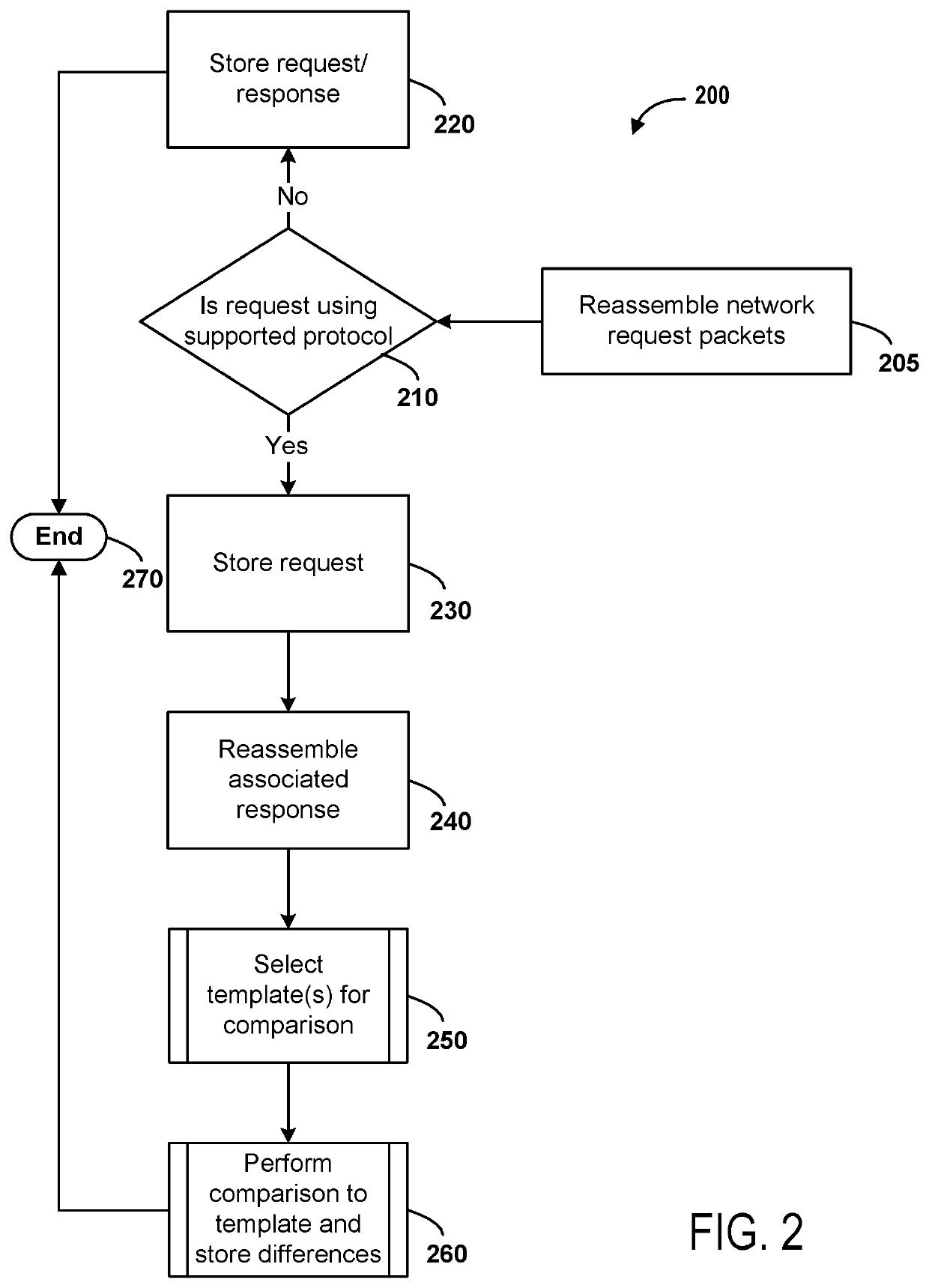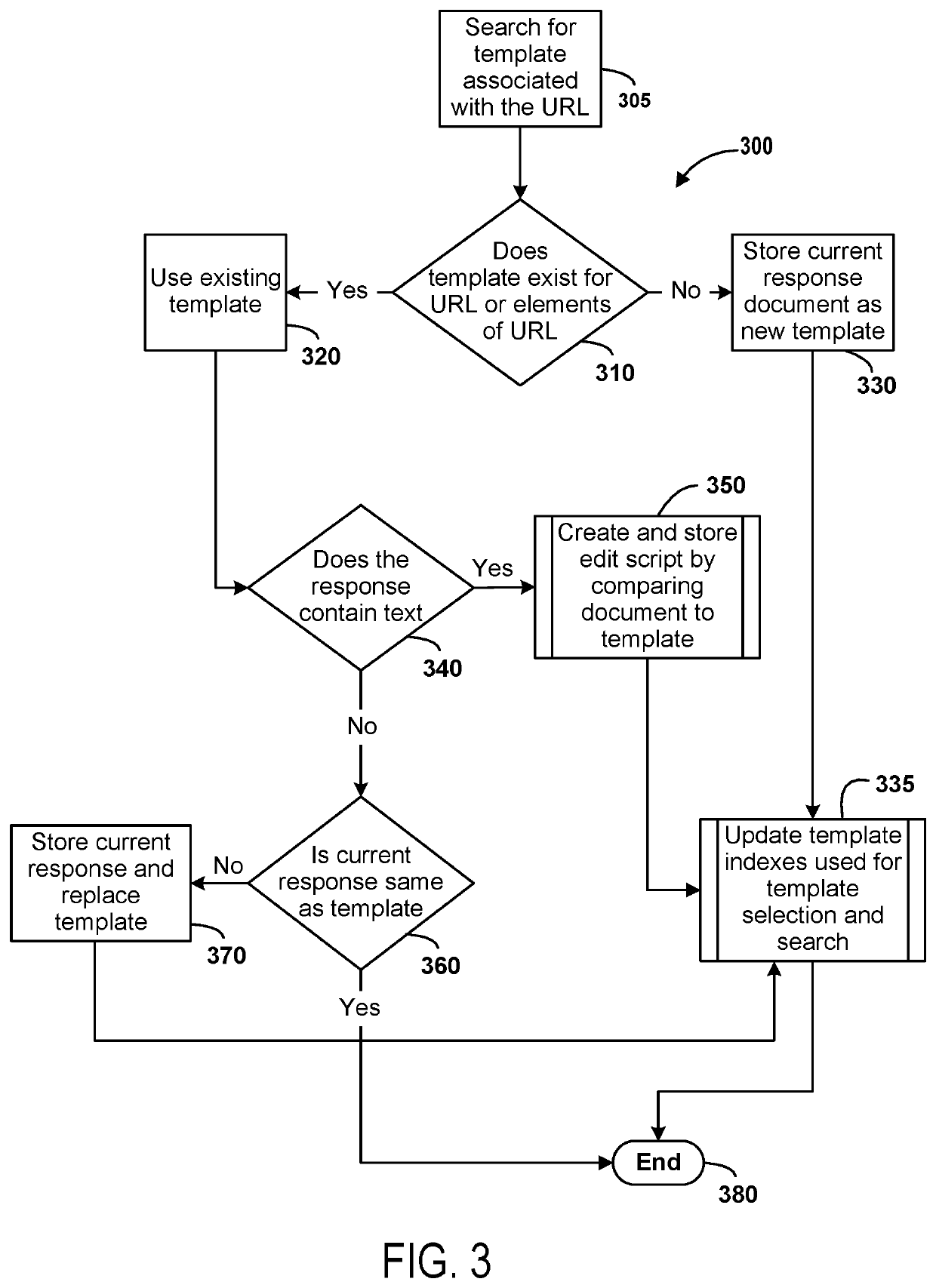Techniques for compact data storage of network traffic and efficient search thereof
a network traffic and data storage technology, applied in the field of network data capture and storage, can solve the problem of limited amount of data that can be used to recreate, and achieve the effect of reducing the amount of data stored, improving processing efficiency, and reducing the storage cost of network traffi
- Summary
- Abstract
- Description
- Claims
- Application Information
AI Technical Summary
Benefits of technology
Problems solved by technology
Method used
Image
Examples
Embodiment Construction
[0031]In the following detailed description of exemplary embodiments of the invention, reference is made to the accompanying drawings which form a part hereof, and in which is shown by way of illustration specific exemplary embodiments in which the invention may be practiced. These embodiments are described in sufficient detail to enable those skilled in the art to practice the invention, and it is to be understood that other embodiments may be utilized and that logical, mechanical, electrical and other changes may be made without departing from the scope of the present invention.
[0032]Techniques for compact data storage of acquired network traffic and efficient search of the data are described. Some embodiments can reduce processing time by optimizing processing for comparison of network traffic against previously stored network traffic. Templates can be stored for content in network traffic that is different and those templates may be used to identify new content in network traffi...
PUM
 Login to View More
Login to View More Abstract
Description
Claims
Application Information
 Login to View More
Login to View More - R&D
- Intellectual Property
- Life Sciences
- Materials
- Tech Scout
- Unparalleled Data Quality
- Higher Quality Content
- 60% Fewer Hallucinations
Browse by: Latest US Patents, China's latest patents, Technical Efficacy Thesaurus, Application Domain, Technology Topic, Popular Technical Reports.
© 2025 PatSnap. All rights reserved.Legal|Privacy policy|Modern Slavery Act Transparency Statement|Sitemap|About US| Contact US: help@patsnap.com



